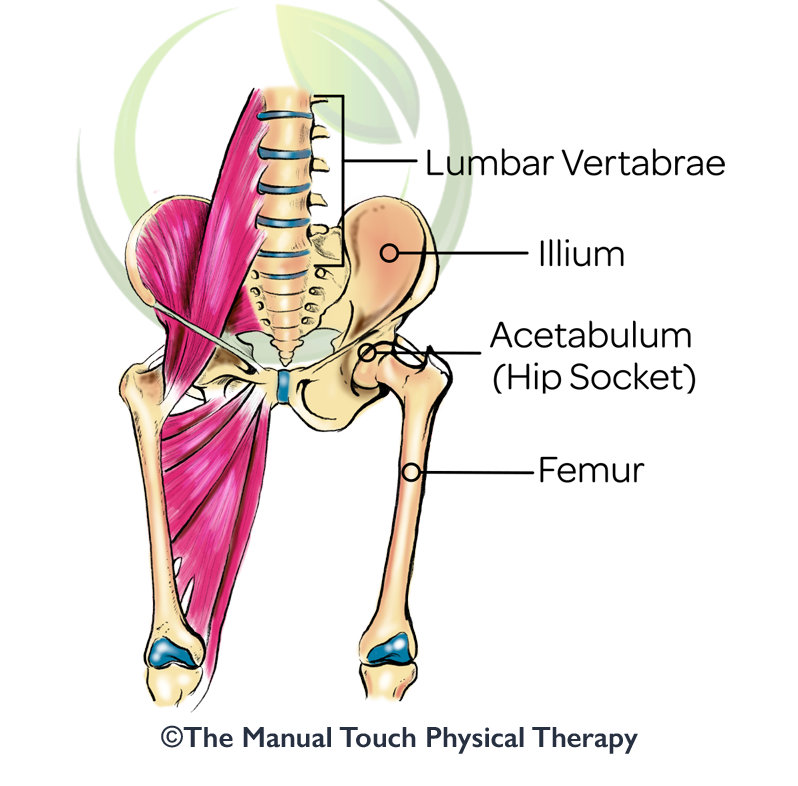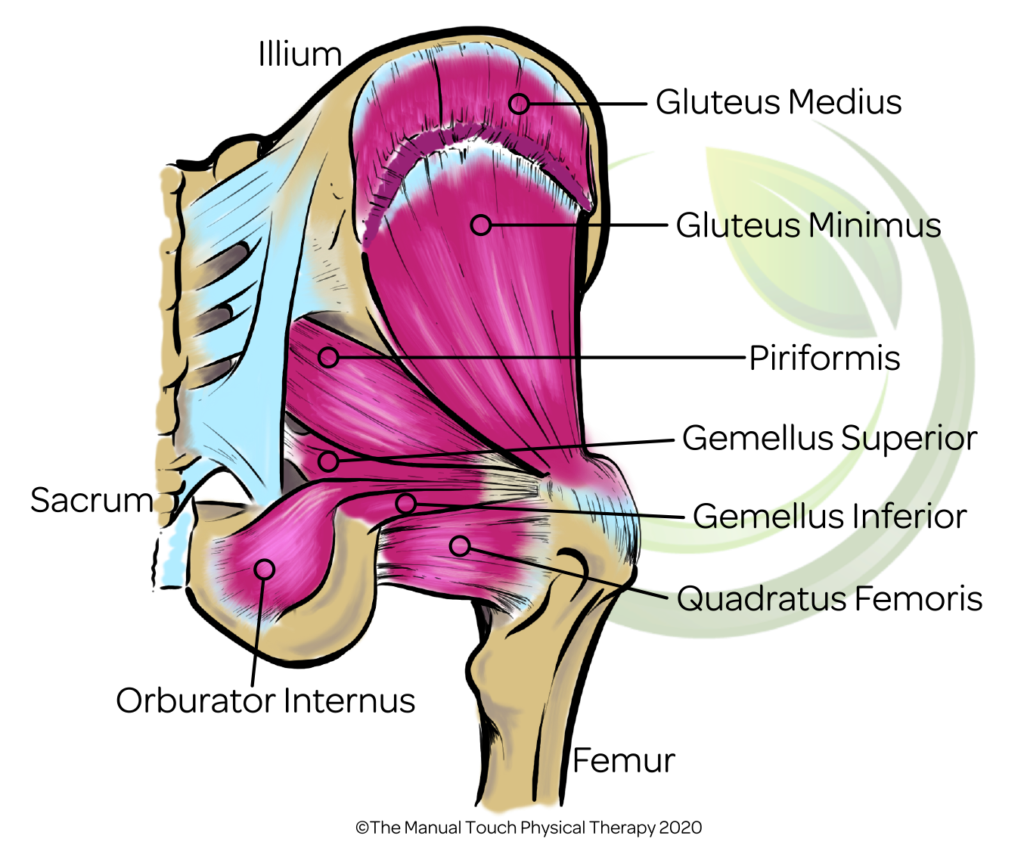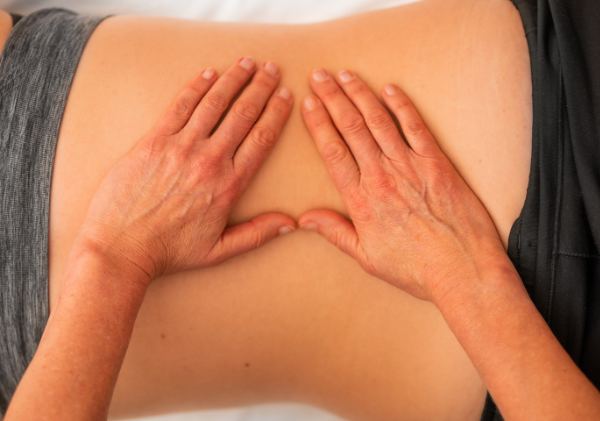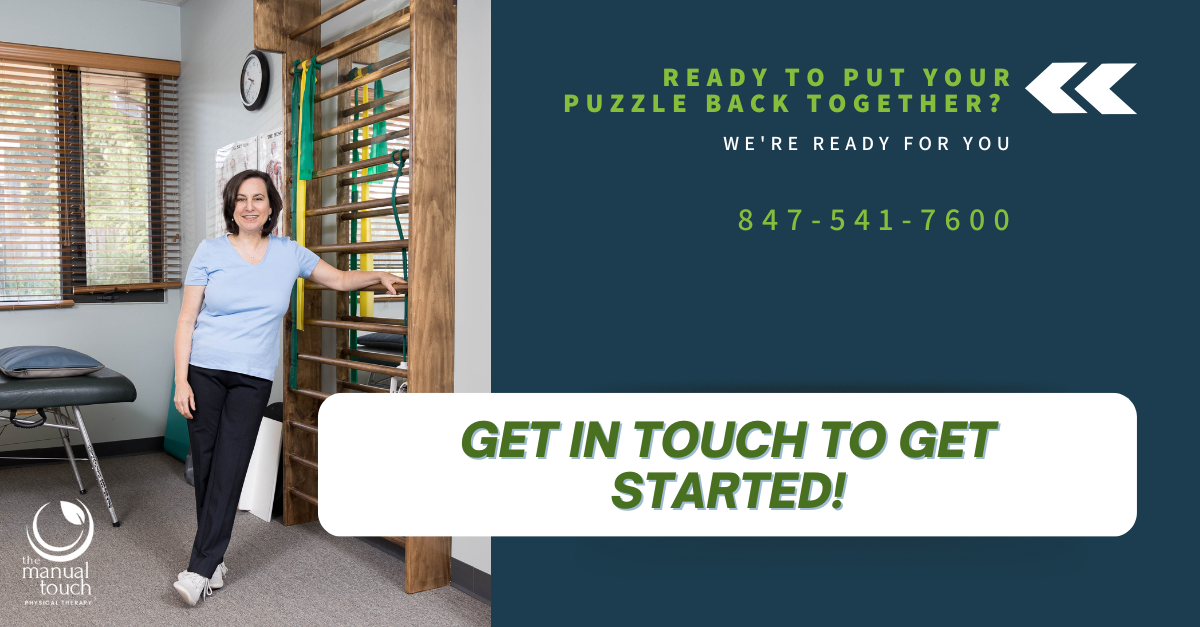Ann came to me complaining of hip pain while walking and sitting for extended periods of time. She wasn’t able to do the things she loved to do like go to museums, attend concerts, or go on long walks because of weakness and arthritis. After physical therapy, Ann is now able to do most of the activities she loves to do and avoided surgery thus far. (Read Ann’s story.)
Holly, a former collegiate tennis player, initially hurt her right hip playing pickleball. She had pain walking and golfing. With physical therapy, her right hip began to resolve but then her left hip began to bother her. Upon examination, she had significant groin pain when rotating her leg out, which is indicative of an impingement. Holly was sent to an orthopedic doctor. X-Rays showed severe arthritis and the need for a total hip replacement. At the age of only 59, Holly had to weigh the options of having hip surgery that might one day need to be replaced or continuing without surgery and suffering significant loss of lifestyle. She couldn’t golf, walk, pick up her grandson or play pickleball. She opted for the surgery to improve her quality of life.
Audrey had hip pain for 1 year before coming into PT and is an avid walker and bicyclist. Her physical therapy evaluation revealed weakness of her deep core muscles, muscle strain of the TFL, and SI joint dysfunction. Audrey had two physical therapy visits consisting of exercises, stretching, hands-on therapy and mindful walking instruction. Audrey now has significant less pain and is able to walk and bike again without increasing her pain.
These ladies all suffer from hip pain, but what causes it?
What causes hip pain?
The hip joint is a ball and socket joint. The ball of the femur sits inside the socket (acetabulum) of the pelvic bone known as the ilium. Surrounding your hip joint are the powerful glute and deep core muscles. Patients often come in complaining of hip pain in a multitude of places: the front of the hip, side of the hip, back of the hip, groin, or buttocks.

It’s important to know where someone feels pain, as that will help discern what is actually causing it. Sometimes it is in the joint itself, other times it’s caused by a strain, tear or weakness of the surrounding hip or deep core muscles. The pain could also come from your back.

Pain in the groin may be coming from the hip joint itself or it could be a strain of the groin (hip adductor) muscles. Pain in the front of the hip could be from the hip flexor (psoas) or quadriceps muscles. Pain on the side of the hip can be many things: trochanteric bursitis, glute strain/tear/weakness, TFL (tensor fascia lata) strain, IT band pain, or radiating (radicular) pain into the hip coming from the back. Pain in the back of the hip is usually an SI (sacroiliac) joint issue.
The common denominator of all hip pain is a weakness of the deep core or pelvic floor muscles which work together to stabilize your pelvis as you move through life.
Hip pain symptoms and diagnoses
When you have hip pain, how do you discern what it means?
Hip pain has many different causes, is very common and your diagnosis depends on your specific symptoms.
The chart below outlines eight common causes of hip pain, the symptoms that arise, and how physical therapists diagnose the problem:
| Cause of Pain | Symptoms | How we Diagnose |
| Hip flexor Strain | Pain in front of hip; sometimes the mid-back, pain when sitting; the first step after sitting; walking, or running | Pain on psoas tendon, pain on psoas muscle deep within the abdomen, pain at TL joint of the spine, weakness on exam |
| Arthritis | Groin pain, decreased mobility: “I can’t walk or run as fast”, “hurts to roll over in bed”, pain moving leg into the car | Significant limited range of motion of the hip – usually in 1 or more directions |
| IT Band | Sharp pain outside of knee when running; pain on outside of thigh | Tenderness on the IT band |
| Tensor Fascia Lata (TFL) | Pain outside of hip pain when walking, exercising, or stretching | Pain/tenderness on the TFL |
| SI Joint | Pain at the site with activity. “Feels locked up”, hurts to lay on your back, hurts to cross legs, pain doing stairs | Stiff, tender SI joint, specific compression tests on the pelvis |
| Glute medius | Outside of hip/buttock pain with movement | Tender glute medius, weakness on exam |
| Impingement | Groin pain, feels locked up, can’t cross legs, hurts getting in/out of a car | FABERs test |
| Hip bursitis | Hurts to lay on hip | Pain right on the trochanter |
Hip flexor/Psoas strain
Your hip flexor is a long, pork loin shaped muscle that attaches to your spine at the thoracic lumbar junction and your femur (thigh bone). It’s primary function is to lift your leg as if climbing a stair. However, the psoas does much more than that. The psoas along with your other core muscles help stabilize your pelvis and trunk.
If you strain your hip flexor, you may experience pain in the front of your hip or, sometimes, in your mid-back. You might also have pain while sitting, walking, or running. Or, when taking your first step after sitting.
A physical therapist will diagnose you with a hip flexor tear if there is pain on the psoas tendon, pain on the psoas muscle deep within the abdomen, pain at the TL joint of the spine and weakness.
Arthritis/degenerative joint
When you have arthritis, the actual hip joint degenerates or develops spurs. Common complaints with arthritis in the hip includes groin pain and decreased mobility. If you can’t walk or run as fast or if it hurts to roll over in bed or lift your leg into the car, these are signs you may have arthritis in your hip.
A physical therapist may diagnose you with arthritis in the hip if there is a significant limited range of motion of the hip, usually in one or more directions.
IT band
The IT band is a long band of connective tissue running from the outside of the pelvis down to the outside of the knee. Common complaints with IT band issues include sharp outside of knee pain when running and pain on the outside of the thigh
A physical therapist may diagnose you with IT band issues if there is tenderness on the IT band.
Tensor Fascia Lata (TFL):
TFL is a small muscle on the upper/outside of the hip. Problems with the TFL cause pain on the outside of the hip when walking, exercising, or stretching.
A physical therapist may diagnose you with TFL issues when there is pain and/or tenderness on the TFL.
SI Joint
The SI joint is found in the upper buttocks where the sacrum and the ilium bone of the pelvis come together. The SI joining isn’t technically considered part of the hip, but people often think of this area as their hip.
Common complaints include pain at the site with activity. Your hip may feel “locked up”, or it might hurt to lay on your back, cross your legs, or take the stairs.
A Physical Therapist may diagnose the issue if you come in with a stiff, tender SI joint and/or with specific compression tests on the pelvis
Glute medius
The Glute Medius is one of the smaller glute muscles, but it’s the most important. This muscle is what allows you to stand on your leg and keep your pelvis level. More than any other hip muscle, it becomes weaker as you age and affects women disproportionately because of the shape of the pelvis in relation to their knees.
The most common complaint is pain outside of the hip/buttock with movement.
A physical therapist may diagnose the issue if you experience tenderness or weakness of the glute med upon examination.
Impingement
When a tissue such as labrum, bone or cartilage gets in the way of the hip joint movement, you experience an impingement.
Common complaints include groin pain and feeling “locked up” with trouble crossing your legs or getting in and out of a car.
A Physical Therapist uses a special hip test called FABERs to diagnose an impingement. For the test, you’ll lie on your back and bend your hips and knees to make a “4” shape. If you experience pain, you likely have an impingement.
Hip Bursitis
A bursa is a fluid filled sac that sits on bony prominences, acting like a buffer. A common sign of hip bursitis is if it hurts to lay on it.
A Physical Therapist may diagnose you with hip bursitis if you have pain right on the trochanter, which is the bony prominence on the outside of your femur.
What is the biggest mistake you can make if you have hip pain?
The biggest mistake you can make is to ignore your pain, or think you can just rest and it will go away. While a short period of rest may be appropriate, ignoring the pain is often a recipe for pain to become chronic, more difficult to treat, and you may develop other issues while compensating for the original issue.
While the goals for any hip pain diagnosis is generally the same: improve your mobility, strength, and balance. And some basic exercises can be done by most people. It is important to have a physical therapist to help you through this process.
What should I look for in a physical therapist?
Your Physical Therapist should:
- Choose the appropriate exercises for you and your specific needs
- Know when to advance those exercises,
- Provide valuable hands-on techniques to promote healing and decrease pain
- Most importantly, provide neuromuscular re-education exercises to reeducate the body to work together
If you are currently in physical therapy, make sure that:
- Your therapist has discussed the importance of your feet and the connection between your feet, hips and core
- You’re doing functional core exercises while standing
- You don’t have more pain for greater than a day after physical therapy
If you aren’t receiving the benefits and care outlined above, you may want to find a different therapist.
Hip Pain Tips
The following are some tips you can use to help ease your hip pain.
- Walk mindfully
- Don’t sit longer than an hour or two
- Modify your activities and don’t do activities that increase your pain after the activity is done, i.e. walk slower, walk shorter distances, stop running or golfing
- Get a new mattress or soft mattress topper
- Purchase good chairs/couch. Find the chair that doesn’t aggravate your pain
- Get a personalized exercise program from a PT to learn how to use muscles correctly and efficiently
- Once you graduate from physical therapy, hire a personal trainer to get stronger
Self Pain Management
- Foam Roll or hand massager – Gently roll TFL and IT band
- Massage – Go for a massage, monitor the intensity for you. Remember, you are in charge of your body!
- Ice or heat the area that is sore
- Take temporary analgesics such as Tylenol or Ibuprofen
- Exercise
Hip pain can be quite debilitating and uncomfortable. Recently, it seems that there is a surge in hip pain because of all the sitting people are doing. It is now more important than ever to keep moving and take care of your hip pain.
Bonus of taking care of hips: your knees will be protected from getting worse and they will feel better!
If you’re in pain and are tired of suffering, give us a call at 847-541-7600. We’d love to help!








Leave a Reply